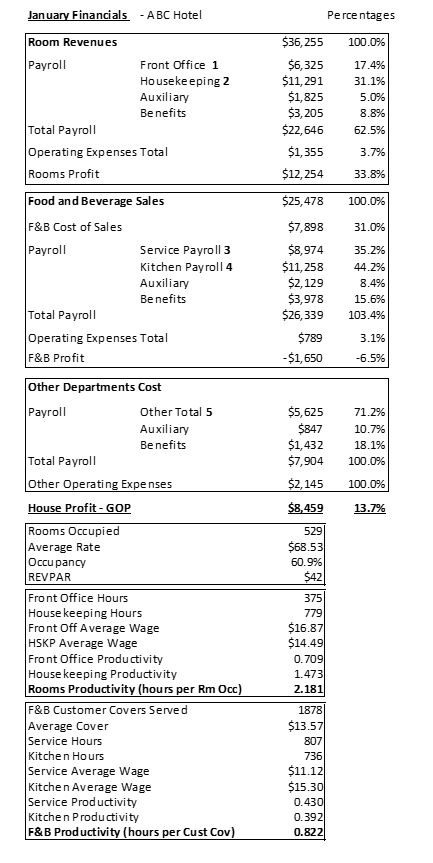
By David Lund
In hospitality we all know that payroll is by far the largest expense and therefore it has the biggest negative impact on profitability. Turn this around and know that finding ways to be more efficient with payroll can have a big impact on labor costs and a positive impact on your hotel’s bottom line.
If you don’t have hours of work in your monthly P&L, you are missing a massive opportunity to better understand payroll and productivity leading to ways to manage your business better. You know what they say, you can’t manage what you can’t measure. Putting hours of labor into your financial statements is just good housekeeping. It is the start of getting your focus on what you can control, which is the number of hours of worked or, more simply stated, the schedule.
There is only one number that will always increase in your hotel, and it is not the RevPAR or the average room rate. It is the average rate of pay. You have little control over the rate of pay. On the flip side you have 100 percent control over the schedule. This is where you need to focus your efforts and putting the hours of work statistics into your monthly P&L is not difficult. Once it is done you will have a baseline for your productivity. A place to start, knowing that improving the productivity will lead to higher profits.
In almost every operation the hours of work are already tracked and totaled on a per pay period basis. This is how your employees get paid. Hours of work are entered into the payroll system and they are multiplied by the wage for each position. Same goes for any salaried positions. So, the total hours of work are already at your fingertips. If you pay your staff every week or every two weeks, there is one small stumbling block you need to overcome. You will need to do a monthly accrual for both the dollars of payroll and the hours and in turn reverse the previous month’s accrual. You may already be doing this. If you pay monthly or semi-monthly, there is no need for an accrual.
Payroll breakdown
In your current financial statement, you will want to review and make sure the payroll is organized so a breakdown is possible. If you have a rooms and F&B operation, you will want to have five different buckets for payroll. If you have a larger operation you will want to consider the complete layout that is covered in the 11th edition for the uniformed system of accounts for hotels. For this article I’m sticking with five as this will work for any operation, especially a smaller one. The five buckets are housekeeping, front office, F&B service, kitchens and all other.
We also want to be able to subtotal:
(Housekeeping + Front Office = Rooms total) and (F&B Service + Kitchens = F&B total)
By grouping the payroll hours and dollars into the five buckets we can begin to see our operation in a different light.
Matching the payroll dollars with the hours in these areas produces the total and average hourly costs in these areas.
Matching the room revenues with the rooms payroll and the expenses produces a rooms profit. Do the same with the F&B dollars and hours and we now have an F&B profit. Use the third payroll group to create the separation for all other payroll.
I have numbered the buckets one through five on the statement to show you the set up. In addition, also separate the cash wages from the auxiliary pay and benefits. This gives you the ability to see the average wage costs as well as the other payroll costs.
I’m not sure what you think but this layout gives me a ton more information about my operation.
This is information you already have—it is just presented differently. A little playing around under the hood of your business and you can produce the same quality information that is going to help you make better decisions about your hotel.
Your new statements now look something like this:
Information is king. Now the fun starts. How can we inspire and innovate with our team to find ways to improve our productivity? In hotel and food service business there are a 1000 ways to be more efficient and the opposite is also true. Now you have a tool that let’s you measure your results, and with your leadership this moves to focus and improvement.
Collect, measure, report, innovate, repeat.


